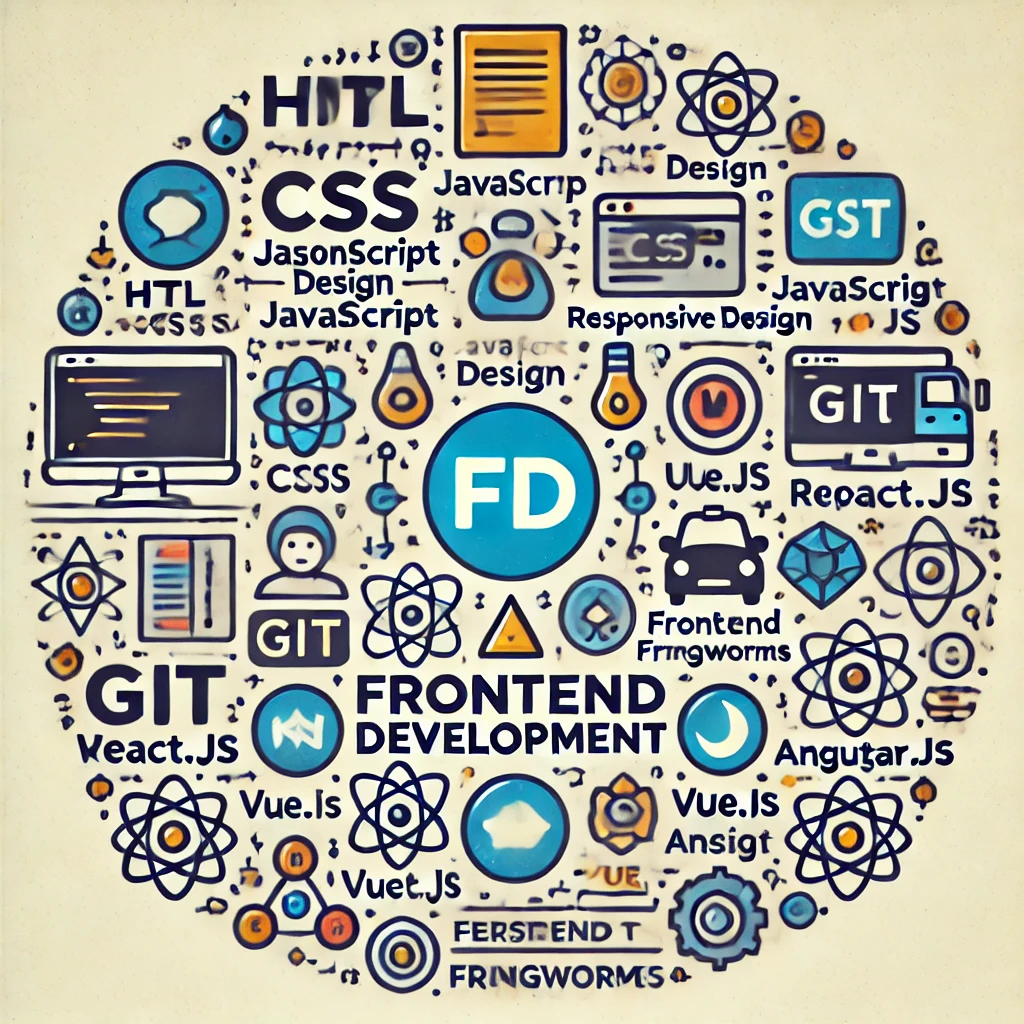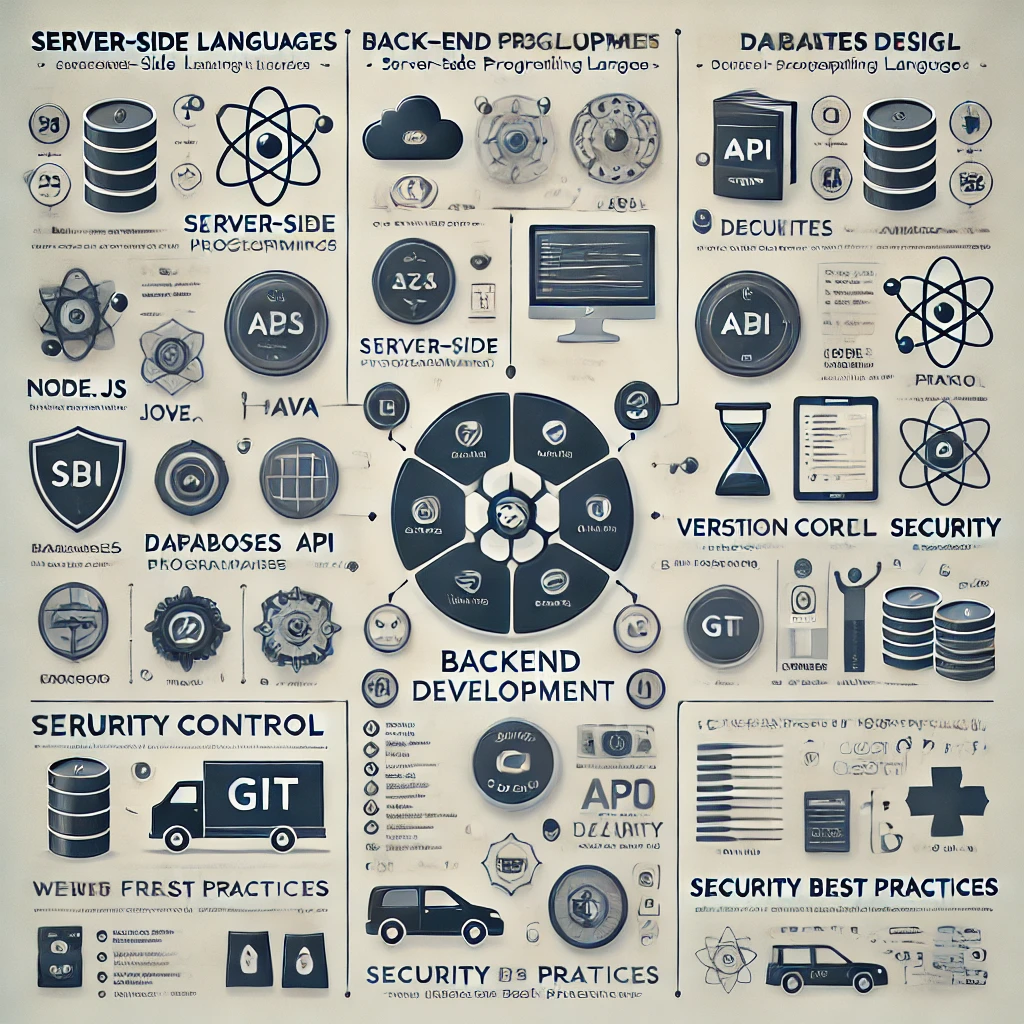Frontend vs. Backend Development: Unveiling the Secrets of the Web
Frontend Development
Frontend development is the face of the web, the part that greets you with its visual allure and interactive elements. It's the realm of design, layout, and user interaction, shaping the user experience (UX) that defines how you engage with a website.
What is Frontend Development?
Imagine a website as a stage. The frontend is the set design, the actors, and the props – everything that the audience sees and interacts with. It’s the part of the website you can directly interact with, like clicking buttons, navigating menus, filling out forms, and watching animations.
In Simpler Terms
Think of frontend development as the art of crafting the visual and interactive elements of a website. It’s about making sure a website looks good, feels intuitive, and responds to user actions. It's the bridge between the website and the user, creating a smooth and enjoyable experience.
Technologies Used in Frontend Development
Frontend development relies on a trio of core languages and a variety of frameworks and libraries to bring web pages to life.
HTML
HTML (HyperText Markup Language) is the foundation of every webpage. It provides the structural blueprint, organizing content into headings, paragraphs, lists, and links. Think of it as the skeleton that gives shape to the website.
CSS
CSS (Cascading Style Sheets) takes over the role of the stylist, adding visual flair to the structural foundation created by HTML. It dictates the colors, fonts, spacing, and layout of elements, ensuring visual harmony and responsiveness on different devices.
JavaScript
JavaScript is the dynamic element, injecting interactivity and functionality into the website. It allows for animations, form validation, user interaction, and data retrieval from APIs without the need to reload the page.
Frontend Frameworks and Libraries
Frontend frameworks and libraries offer a set of pre-built components and tools that streamline the development process, enabling developers to build complex interfaces more efficiently. Here are some popular examples:
- React.js: A JavaScript library used for building dynamic user interfaces, especially for single-page applications.
- Vue.js: A progressive JavaScript framework for creating user interfaces and single-page applications.
- Angular: A powerful framework for developing dynamic, single-page web applications.
- Bootstrap: A CSS framework that provides ready-to-use UI components and responsive grid systems for designing webpages that adapt to different screen sizes.
Skills Needed for Frontend Development
Frontend development requires a blend of technical skills and a keen eye for design. Here's a glimpse into the essential skills:
- HTML/CSS Proficiency: A deep understanding of HTML semantics and modern CSS techniques, including Flexbox and CSS Grid, is key to crafting visually appealing and responsive websites.
- JavaScript Mastery: Proficiency in JavaScript and its core concepts, including DOM manipulation, event handling, and asynchronous programming, is essential for adding interactivity and dynamic features.
- Responsive Design: The ability to create layouts that adjust seamlessly to different devices and screen sizes using media queries, Flexbox, or CSS Grid is crucial for delivering a consistent user experience across all platforms.
- Version Control: Experience with Git for version control is essential to manage and track changes in code, facilitating collaboration and ensuring a clean development workflow.
- UI/UX Design: An understanding of user experience principles and a good eye for design are crucial for creating intuitive and visually appealing interfaces.

Backend Development
Now, let’s shift our focus to the unseen powerhouse behind the web – the backend. Unlike the frontend, the backend operates behind the scenes, handling the complex data processing, logic, and server-side operations that make a website function seamlessly.
What is Backend Development?
Think of the backend as the brains behind the website, controlling the information flow, user authentication, and data management. It's the hidden engine that powers the website, making sure everything works correctly and efficiently.
In Simpler Terms
Backend development is like the backstage of a theatrical production. While the audience (users) experience the front stage (frontend), the backend is where the stage crew works tirelessly to make sure everything runs smoothly, handling tasks like setting up the stage, managing the props, and ensuring the play proceeds as planned.
Technologies Used in Backend Development
Backend development involves a range of languages, databases, and frameworks that work together to manage data, process requests, and respond to frontend requests. Here’s a breakdown of some key technologies:
Server-Side Languages
Server-side languages are the primary tools used to build the core logic and functionality of the backend. Here are some popular examples:
- Node.js: A JavaScript runtime built on Chrome’s V8 engine, allowing developers to run JavaScript on the server side. Node.js is known for its speed and scalability, making it ideal for building real-time applications.
- Python: A versatile language with a reputation for simplicity, Python is widely used in backend development, especially with frameworks like Django and Flask. Its ease of use and large community support make it a popular choice for web development.
- PHP: A server-side scripting language commonly used for creating dynamic web pages. PHP powers many popular content management systems (CMS) like WordPress, making it a widely used language.
- Ruby: A language known for its elegance and efficiency, Ruby is used with the Ruby on Rails framework for building web applications quickly and efficiently.
- Java: A reliable and scalable language often used in enterprise-level applications, Java is known for its robustness and stability, making it suitable for building complex, scalable backend systems.
Databases
Databases act as repositories for storing and managing the information that fuels a website. Here are two key types:
- SQL (Structured Query Language): Used to interact with relational databases like MySQL, PostgreSQL, and SQLite. SQL is ideal for managing structured data with clearly defined relationships between data points.
- NoSQL: Databases like MongoDB are used when data is unstructured or when scalability is a priority. NoSQL databases are often used for big data and real-time web apps.
Backend Frameworks
Backend frameworks provide a foundation for building backend applications, offering pre-built components and patterns that streamline development and enhance code organization. Here are some popular examples:
- Express.js: A minimal and flexible framework for Node.js, simplifying the creation of APIs and web servers.
- Django: A high-level Python framework that prioritizes rapid development and clean design, offering a comprehensive set of tools for building web applications quickly and efficiently.
- Laravel: A PHP framework known for its elegant syntax and robust features, providing a comprehensive toolkit for building web applications with ease.
- Spring Boot: A Java-based framework for building standalone, production-grade Spring-based applications, offering a robust foundation for enterprise-level projects.
APIs
APIs (Application Programming Interfaces) act as the communication bridge between the frontend and backend. They enable the frontend to request data and functionality from the backend, enabling dynamic interactions. RESTful APIs are commonly used for this purpose, but GraphQL is gaining popularity for its flexibility and efficiency.
Skills Needed for Backend Development
Backend development demands a strong foundation in programming, data management, and server-side technologies. Here’s a breakdown of some essential skills:

- Programming Languages: Proficiency in at least one server-side language (Node.js, Python, Ruby, Java, PHP) is crucial for building the core logic and functionality of the backend.
- Database Knowledge: A solid understanding of relational and NoSQL databases, including how to interact with them using SQL or an ORM (Object Relational Mapping), is essential for managing and querying data effectively.
- API Development: Experience in designing and implementing RESTful APIs and an understanding of GraphQL are important for creating robust communication pathways between the frontend and backend.
- Server Management: Familiarity with web servers (e.g., Apache, Nginx) and basic cloud infrastructure (AWS, Google Cloud, Azure) is essential for deploying and managing backend applications.
- Security: Understanding web security best practices, including encryption, authentication, and authorization, is crucial for protecting user data and preventing vulnerabilities.
The Key Differences Between Frontend and Backend Development
| Aspect | Frontend Development | Backend Development |
|---|---|---|
| User Interaction | Direct interaction (UI/UX) | Indirect interaction (server-side logic) |
| Technologies | HTML, CSS, JavaScript, React, Vue.js, etc. | Node.js, Python, PHP, Ruby, Java, etc. |
| Responsibilities | Design, layout, interactivity | Data management, server-side logic, APIs |
| Focus | Visual and interactive elements | Data processing, server communication |
| Tools/Frameworks | Bootstrap, Angular, Vue.js, React | Express.js, Django, Laravel, Spring Boot |
Take the Leap: Enroll in Apnaguru's Full Stack Development Course Today!
Ready to begin your journey? Sign up here to join the Full Stack Development Course at Apnaguru and start building a rewarding career.
Don’t miss this opportunity to level up your career. Apnaguru’s Full Stack Development course not only equips you with the technical skills you need but also gives you a head start with industry-relevant projects and a guaranteed internship. Enroll today and take the first step toward an exciting and fulfilling career in tech!
For more details and course enrollment, visit Apnaguru.
Conclusion: Which One Should You Choose?
The choice between frontend and backend development boils down to your personal interests, career goals, and the type of work that excites you. If you’re drawn to design, creating visually appealing and interactive interfaces, and ensuring a smooth user experience, frontend development may be the perfect fit.
On the other hand, if you enjoy working with databases, server logic, and building systems that handle complex data, backend development could be a rewarding path. Some developers choose to become full-stack developers, mastering both frontend and backend skills, making them highly versatile and valuable assets to any team.
In the ever-evolving world of web development, both frontend and backend developers play crucial roles in bringing digital experiences to life. By mastering the technologies and skills of either or both domains, you can carve out a fulfilling and successful career in the fascinating world of web development.